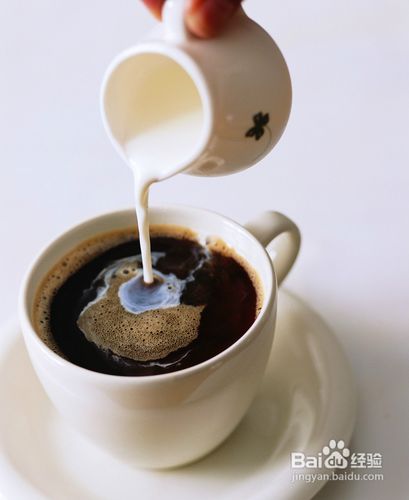A brief introduction to the History and Culture of the Origin and Development of Fruit-flavored Burundian Coffee beans

Drinking hot coffee is a necessary condition for tasting delicious coffee, even on a hot summer day.
Burundian coffee was introduced by Belgian colonists in 1930 and is now grown only on small farms. Unfortunately, many of these farms are on the border with war-torn Rwanda, putting pressure on coffee production. Almost all coffee produced in Burundi is Arabian coffee beans, while coffee trees in Ngozi are planted at an altitude of more than 1200 meters. Burundian coffee has a rich aroma and excellent acidity, and most of its products are exported to the United States, Germany, Finland and Japan.
Dry aroma (1-5): not applicable
Wet aroma (1-5): not applicable
Acidity (brightness) (1-10): not applicable
Taste (layered) (1-10): not applicable
Taste (alcohol thickness) (1-5): not applicable
Aftertaste (residue) (1-10): not applicable
Balance (1-5): not applicable
Base score (50): not applicable
Total score (maximum 100): not applicable
Strength / main attributes: medium strong / sweet, fruit flavor, spicy aftertaste.
Recommended baking degree: full city
Contrast: very similar to Kenyan coffee
1. Promote the pace of privatization and liberalization of the coffee industry
two。 Assist production organizations or small farmers to improve the refinement process and the quality of growing coffee
3. Develop the market of boutique coffee in the United States, Europe and Asia
4. Increase coffee production
After more than a decade of civil war and political instability, Burundi is ready to change in response to the fast-changing global coffee market, the growth of the boutique coffee market has become a trend. Burundi has many conditions for producing high-quality boutique coffee.
Since BAP began in 2007, BAP has worked with everyone in the coffee supply chain, from producers to buyers, hoping to give way to Londi to understand what kind of coffee they are producing and to let them know about sustainability and the different needs of the global market.
This time, I visited two coffee washing plants, one large and the other owned by a small cooperative.
Large-scale washing plant
Cooperative Farmers: 2000
Equipment:
i. Coffee cherry manual primary screening table-
ii. Water trough-sift out immature fruits, branches and leaves, etc.
iii. Peeling machine
iv. Fermentation tank-fermentation for 13 hours and 16 hours (depending on weather conditions)
v. Washing passage
vi. Rest trough-after the fermentation of raw coffee beans is completed, after the mucous membrane is removed, it will rest in the rest tank (without additional water) for 24 hours.
vii. African bed-dried coffee raw beans. In the past, Burundian farmers wanted to reduce the moisture content of raw beans to about 12% as soon as possible (18 days), but found that this drying rate would speed up the aging of raw beans. BAP changed this practice, extending the drying period of raw beans to 23 days and found that there was no obvious aging flavor after storing raw beans for a year.
viii. Water purification tank-there are four tanks, the first tank is a static sedimentation tank, followed by coarse filtration, vegetable activated carbon, activated carbon, the filtered water will be used in the fermentation tank to reduce water use.
ix. Warehouse-Storage of raw beans with shells
Producing country: Burundi
Grade: AA,FWS
Planting area: Buyendi
Brand name: Buyendi
Treatment method: wet treatment
Appearance: 1dcompany300grgrRAME 16-18SCR
Variety: Jackson bourbon
There are different flavors of coffee, so you can't drink three or four cups in a row like tea or cola, but the formal coffee cup is the best. Ordinary coffee to 80-100cc for the right amount, sometimes if you want to drink three or four cups in a row, then it is necessary to dilute the concentration of coffee, or add a lot of milk, but still take into account the degree of physical needs, to add or reduce the concentration of coffee, that is, do not cause greasy or nauseous feeling, and in the allocation of sugar might as well be more changes to make the coffee more delicious.
Important Notice :
前街咖啡 FrontStreet Coffee has moved to new addredd:
FrontStreet Coffee Address: 315,Donghua East Road,GuangZhou
Tel:020 38364473
- Prev

A brief introduction to the flavor, taste and aroma characteristics of Burundian boutique coffee beans
There are many hippos and crocodiles in the lake, and there are many kinds of birds. There are more than 300 kinds of fish in the lake, among which the African crucian carp is the most famous. Developed water transport, there are Kighoma, Ugiji, Kalemi, Uvira, Bujumbura and other lake ports. There are many crocodiles and hippos in the lake, surrounded by elephants, antelopes, lions, giraffes and other animals endemic to Africa. The lake is rich in fish and all kinds of waterbirds, which is a good day.
- Next

Almond aroma of Burundi fine coffee beans varieties planted market price profile
This batch belongs to Bourbon seed micro batch [Champion Processing Plant in Burundi] Located at the peak of Maldadi, Panjia Processing Plant in Kabye District, Kayanza Province, with a very high altitude, even more than 2000 meters above the mountain, fertile soil, gravel soil, very suitable for coffee growth, recognized as the best coffee processing plant in Burundi. Bean Parameters: Country: Burundi Growth: 1750 km
Related
- Detailed explanation of Jadeite planting Land in Panamanian Jadeite Manor introduction to the grading system of Jadeite competitive bidding, Red bid, Green bid and Rose Summer
- Story of Coffee planting in Brenka region of Costa Rica Stonehenge Manor anaerobic heavy honey treatment of flavor mouth
- What's on the barrel of Blue Mountain Coffee beans?
- Can American coffee also pull flowers? How to use hot American style to pull out a good-looking pattern?
- Can you make a cold extract with coffee beans? What is the right proportion for cold-extracted coffee formula?
- Indonesian PWN Gold Mandrine Coffee Origin Features Flavor How to Chong? Mandolin coffee is American.
- A brief introduction to the flavor characteristics of Brazilian yellow bourbon coffee beans
- What is the effect of different water quality on the flavor of cold-extracted coffee? What kind of water is best for brewing coffee?
- Why do you think of Rose Summer whenever you mention Panamanian coffee?
- Introduction to the characteristics of authentic blue mountain coffee bean producing areas? What is the CIB Coffee Authority in Jamaica?

